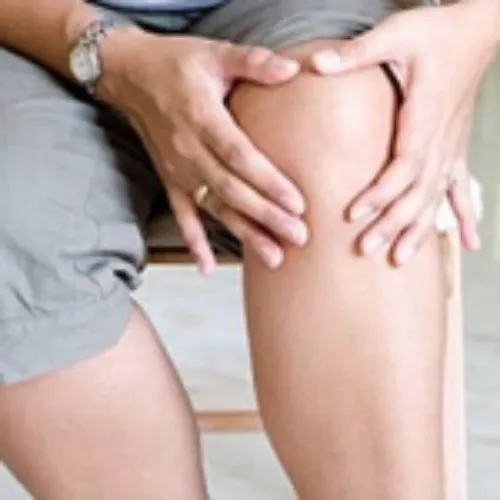Your knee joint is the largest joint in the body and one of the most important and rather complicated. It needs to be strong enough to take your weight and mobile enough to allow for movement and sporting activities. As well as acting as a hinge joint, it allows rotation for twisting, turning and kneeling. Arthritis of the knee joint I like to term as ‘wear and tear’. As with all weight baring joints, over our lifespan these areas are prone to wearing. This can be variable depending on a person’s age, their weight, their lifestyle and any previous injuries they may have sustained. People tend to associate osteoarthritis with more elderly patients however I do see a number of younger clients within the practice who do have early wear and tear within their knees, mainly due to hereditary factors or due to previous injuries they’ve had in the past.
Signs and symptoms to look for are localised tenderness, swelling, any instability, a creaking feeling or noise within the knee when you bend or straighten it and any signs of muscle wasting or weakness, mainly in the thigh muscle called the Quadriceps. On experiencing any one or a number of these symptoms, patients usually call to see their GP or give us a ring in order to gain some advice regarding what to do over future management. Some GPs choose to x-ray the patient to try and establish exactly where and the degree of the wear and tear is within the knee joint. On the whole, I don’t usually recommend that every patient that comes into the clinic has an x-ray as more often than not they are not always required for me to gain a diagnosis, in fact I’ve often had the care where patients come in on their knees in agony where nothing shows on their x-ray and patients hopping and skipping in that have pretty drastic wear and tear, So as much as x-rays can give you an indication of what’s going on, they don’t always correlate with the symptoms and the degree of wear and tear that the patient experiences.
Once patients come into clinic we examine them, and then more often than not start a local course of treatment which involves mobilising the joints, some stretches to increase the movement, some electrotherapy and heat to ease the pain and inflammation. We can give advice in the form of weight management if required, we also prescribe strengthening exercises as I mentioned earlier, to the thigh muscles called the quadriceps. These muscles are instrumental in helping to strengthen and stabilise the knee joint and if performed regularly enough can make a marked difference to patient’s rehabilitation and recovery time. I often advise before going to bed patients to either have a hot bath or shower or apply a wheatie bag or a hot water bottle to the knees. This in turn helps ease the pain and increase the blood supply to the area to help the healing process. Patients often take painkillers before bed and I also recommend them resting a pillow between their knees to sleep at night. More often than not when patients come into the surgery they’ve usually had symptoms for a little while and as much as their knees they feel are the most problematic area, more often than not I always check the patients lower back too. Stiffness within the lower back can play quite a major part in issues in the knee, and by relieving the stiffness locally in the back it takes the pressure off the nerve tension in the thigh and also increases the hip range of movement to help stabilise the knee too. Most patients leave after a couple of sessions of physiotherapy markedly better and improved. The odd patient that doesn’t and we struggle to restore range and ease pain, we transfer back to the GP for further management whether it’s for an injection or a referral onto a local orthopaedic consultant for a secondary opinion. In most cases, I advise patients regarding pacing their activities, more often than not wearing lower healed supportive shoes and try and alter their sitting and driving positions to take the pressure off their knees when they are bent. All in all, for such a common complaint, there is an awful lot that can be recommended, and as I often say to patients, wear and tear is just you greying up from the inside out!

